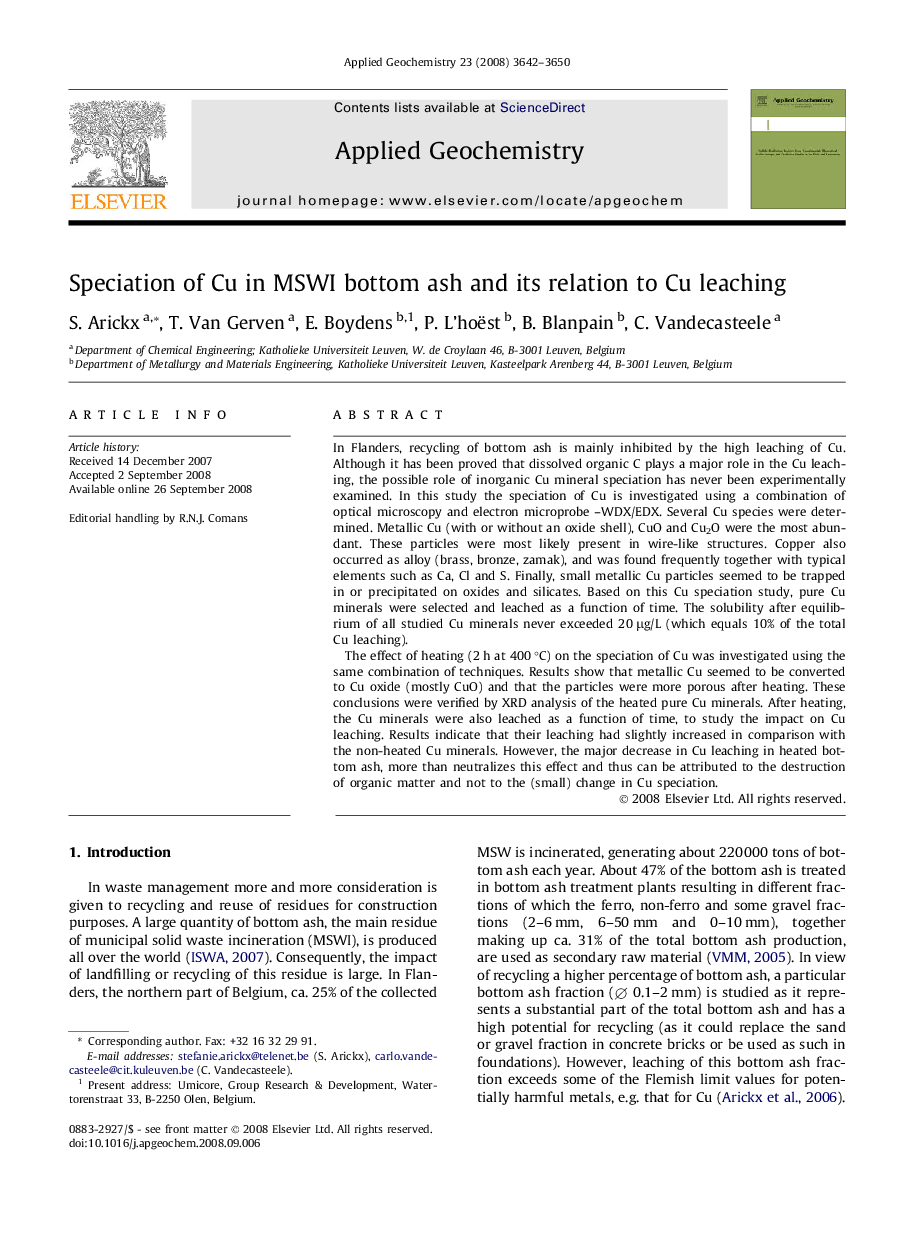| کد مقاله | کد نشریه | سال انتشار | مقاله انگلیسی | نسخه تمام متن |
|---|---|---|---|---|
| 4437398 | 1310722 | 2008 | 9 صفحه PDF | دانلود رایگان |

In Flanders, recycling of bottom ash is mainly inhibited by the high leaching of Cu. Although it has been proved that dissolved organic C plays a major role in the Cu leaching, the possible role of inorganic Cu mineral speciation has never been experimentally examined. In this study the speciation of Cu is investigated using a combination of optical microscopy and electron microprobe –WDX/EDX. Several Cu species were determined. Metallic Cu (with or without an oxide shell), CuO and Cu2O were the most abundant. These particles were most likely present in wire-like structures. Copper also occurred as alloy (brass, bronze, zamak), and was found frequently together with typical elements such as Ca, Cl and S. Finally, small metallic Cu particles seemed to be trapped in or precipitated on oxides and silicates. Based on this Cu speciation study, pure Cu minerals were selected and leached as a function of time. The solubility after equilibrium of all studied Cu minerals never exceeded 20 μg/L (which equals 10% of the total Cu leaching).The effect of heating (2 h at 400 °C) on the speciation of Cu was investigated using the same combination of techniques. Results show that metallic Cu seemed to be converted to Cu oxide (mostly CuO) and that the particles were more porous after heating. These conclusions were verified by XRD analysis of the heated pure Cu minerals. After heating, the Cu minerals were also leached as a function of time, to study the impact on Cu leaching. Results indicate that their leaching had slightly increased in comparison with the non-heated Cu minerals. However, the major decrease in Cu leaching in heated bottom ash, more than neutralizes this effect and thus can be attributed to the destruction of organic matter and not to the (small) change in Cu speciation.
Journal: Applied Geochemistry - Volume 23, Issue 12, December 2008, Pages 3642–3650